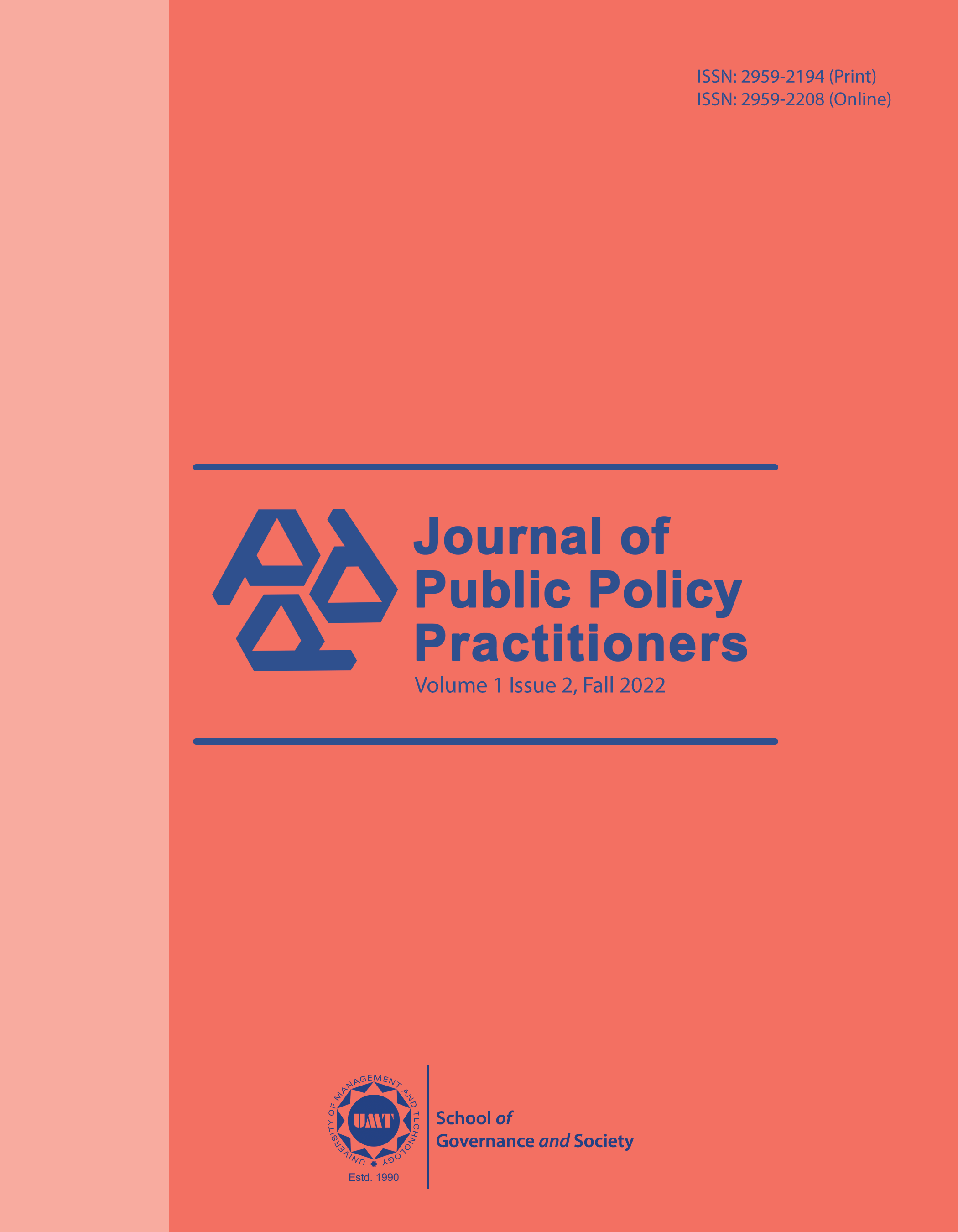National Internal Security Policy: An Assessment
Abstract
 Abstract Views: 96
Abstract Views: 96
For the last few years, Pakistan has faced many traditional and nontraditional security threats. Among them, the fatal threat is terrorism and extremism in the country, which has largely been connected with the Afghan war. After 9/11, terrorism and extremism got triggered in Pakistan, in which the country faced heavy consequences in terms of economy, loss of life, and destruction of infrastructure. This grave situation compelled the government to develop a comprehensive national security policy to address the growing threats. In 2014, the government enacted the first NISP 2014-2018. The focus was to initiate military operations in FATA areas to eliminate the terrorist’s hold, which achieved some positive outcomes in the short run. In 2018, prior to the general elections, the previous government announced another NISP 2018-2023. The implementation of that newly announced security policy was handed over to the new government. It was observed that the policy could not achieve the desired outcomes, as there were certain loopholes in the formulation and implementation of these stages. In this regard, the focus of the current research is, to critically analyze the drawbacks of NISP for the period of 2018-2023.
Downloads
References
Ahmed, K. (2021, September 12). War on terror’ has cost Pakistan more than $150bn in losses since 9/11, officials say. Arab News. https://www.arabnews.com/node/1927131/world
Buzan, B. (1983). People, states and fear; The national security problem in international relation. The University of North Carolina Press.
Farooq, K. K. (n.d.). The national internal security policy of Pakistan- An Assessment.
Ghani, I. (2018). Intelligence collaboration between law enforcement, military and national security agencies in Pakistan. Pakistan Journal of Criminology, 10(4), 135–149.
Khosa, T. (2014, March 8). Roadmap to internal security. Dawn. https://www.dawn.com/news/1091721
Mirza, J. A. (2018). NISP: A long way to go. The News International. https://www.thenews.com.pk/print/331167-nisp-a-long-way-to-go
Nabeel, F. (2018, January 2). National internal security policy 2018-2023 — a critical assessment. The Daily Times. https://dailytimes.com.pk/276539/national-internal-security-policy-2018-2023-a-critical-assessment/
National Counter Terrorism Authority. (2021). (NCTA). NCTA watch 2020–2021. https://nacta.gov.pk/wp-content/uploads/2020/10/NACTA-WATCH-2020-21.pdf
Rana, M. A. (2010). Litterateurs’ response to extremism in Pakistan. Conflict and Peace Studies, 3(1), 23–30.
Rana, M. A. (2014). Literature responses to extremism in Pakistan. Pakistan Institute for Peace Studies.
Syed, M. H. (2019, December 23). The vision of the founding father: what the Quaid foresaw in 1948. Youlin Magazine. http://www.youlinmagazine.com/story/vision-of-the-founding-father-quaid-i-azam-muhammad-ali-jinnah/NzM0/?fb_comment_id=1207832865931107_4023251794389186
Ullah, I. Rehman, A. U., Ali, S., & Yasmin, A. (2018). National internal security policy: An analysis of prospects and challenges for Pakistan. Journal of Applied Environment and Biological Sciences, 8(2),178–183.
United Nations Development Program. (1994). Human development report 1994. Oxford University Press. https://www.undp.org/publications/human-development-report-1994
Wolfers, A. (1962). Discord and collaboration: Essays on international politics. Johns Hopkins University Press.
Zahid, F. (2016, July 19). Counterterrorism policy measures: A critical analysis of Pakistan’s national action plan. The Mackenzie Institute. https://mackenzieinstitute.com/2016/07/counter-terrorism-policy-measures-a-critical-analysis-of-pakistans-national-action-plan/







